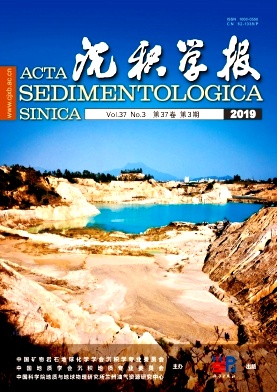Sedimentary Characteristics and Evolution Model of the Upper Permian on the Northeast Periphery of Bogda Mountain
doi: 10.14027/j.issn.1000-0550.2018.159
- Received Date: 2018-02-06
- Rev Recd Date: 2018-08-10
- Publish Date: 2019-06-10
-
Key words:
- Bogda Mountain /
- Xidalongkou profile /
- Shuixigou profile /
- Upper Permian /
- sedimentary facies /
- sedimentary evolution model
Abstract: Through detailed outcrop observations and meticulous measurement of the Upper Permian Xidalongkou and Shuixigou profiles on the northeast periphery of Bogda Mountain, the stratigraphic and sedimentary facies characteristics of the study area were carefully analyzed, from which a sedimentary evolution model was established. The results show that, during the Upper Permian on the northeast periphery of Bogda Mountain, the Quanzijie, Wutonggou, and Guodikeng Formations developed from the bottom up. During the Quanzijie Formation deposition period, in the Xidalongkou and Shuixigou profiles, alluvial fan and meandering river sedimentary facies were developed. Inside the alluvial fan glutenite body, there is a large amount of sandstone and oil shale conglomerates, which are the product of the process whereby the Middle Permian Hongyanchi and Lucaogou Formations in the periphery of Bogda Mountain were eroded and then deposited in front of the mountain. During the Wutonggou Formation deposition period, the ancient Bogda Mountain rose up and became the main sediment source, during which, inside the Xidalongkou and Shuixigou profiles, braided river sedimentary facies and meandering river sedimentary facies were developed; more volcanic rock gravels can be found in the braided river glutenite body. During the Guodikeng Formation deposition period, the Xidalongkou and Shuixigou profiles mainly developed meandering river floodplain sedimentary facies, in which fuchsia silty mudstone and mudstone were the major depositions.
| Citation: | WANG Yue, ZHANG GuanLong, WANG ShengZhu, LIN HuiXi, ZHANG KuiHua, WANG YuXin, QU YanSheng, ZHANG Shun, ZHANG YaNan. Sedimentary Characteristics and Evolution Model of the Upper Permian on the Northeast Periphery of Bogda Mountain[J]. Acta Sedimentologica Sinica, 2019, 37(3): 579-588. doi: 10.14027/j.issn.1000-0550.2018.159 |






 DownLoad:
DownLoad: